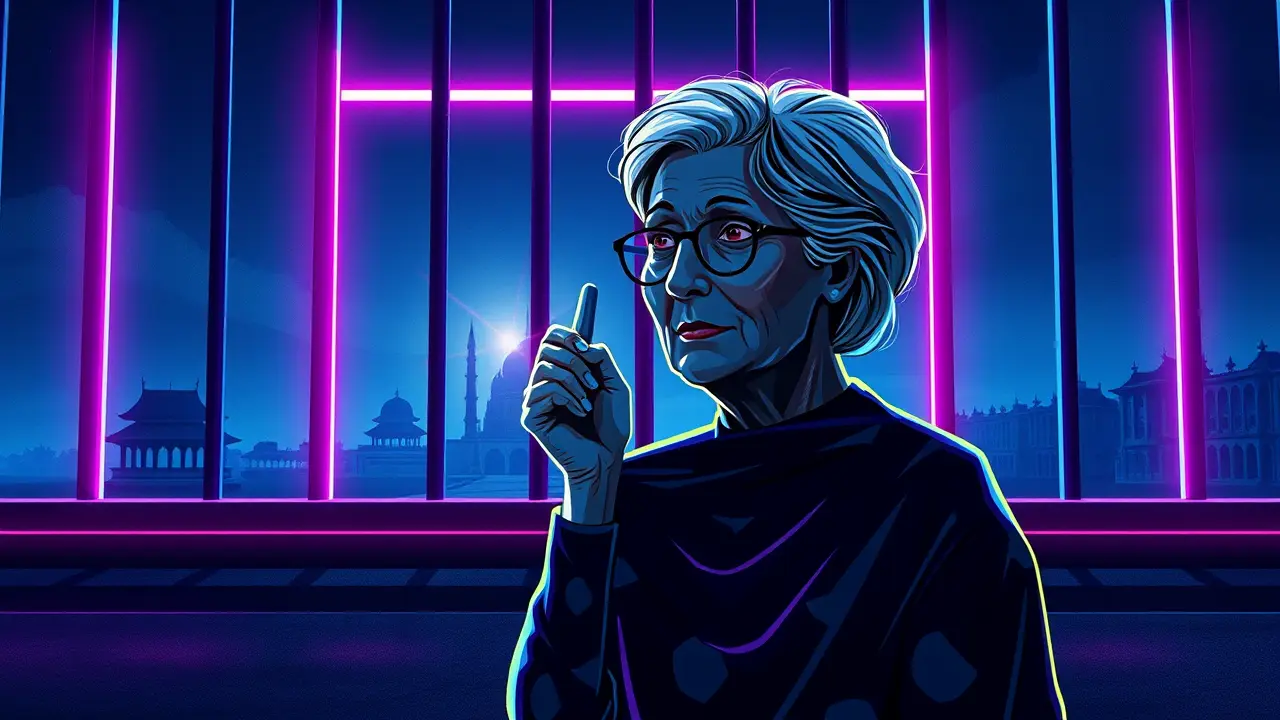British Grandmother Freed from Bali Death Row After 12 Years
The phone call from Kerobokan Prison cut through the morning stillness with the sharp, electric crackle of a life irrevocably changed. After twelve years trapped within the grim, sun-bleached walls of Bali's most notorious penitentiary, Lindsay Sandiford, a 68-year-old British grandmother, was finally tasting freedom.Her story is not a simple one; it is a harrowing tapestry woven from threads of desperation, international legal intrigue, and a profound, grinding human endurance that defies easy categorization. Sandiford’s ordeal began not with a bang, but with the quiet, ominous click of a suitcase latch at Ngurah Rai International Airport in May 2012.Indonesian authorities, acting on intelligence, discovered 10. 6 pounds of high-purity cocaine, with a staggering street value of €2.1 million, meticulously concealed within the lining of her luggage. The image of the grey-haired woman from Gloucestershire, a seemingly unassuming tourist, standing amidst the chaos of the baggage claim as her world disintegrated, became an international sensation.Yet, behind the tabloid headlines lay a far darker narrative, one that the prosecution painted with broad, unforgiving strokes: Sandiford was a drug mule, a cog in a sophisticated international trafficking ring. She claimed, and has maintained with a steely resolve that has never wavered, that she was coerced by a criminal syndicate that had threatened to harm her son if she did not comply.This defense, a plea of duress that echoes through courtrooms from London to Jakarta, became the central, agonizing pivot of her life for over a decade. The subsequent trial was a swift and brutal affair, a stark demonstration of Indonesia's zero-tolerance approach to narcotics.In January 2013, the judges delivered their verdict, a sentence that sent a chill around the world: execution by firing squad. In that moment, Sandiford was transferred from a defendant to a resident of Bali's death row, a surreal and terrifying purgatory where hope is a scarce commodity.Her case became a diplomatic firestorm, with the UK Foreign Office navigating the treacherous waters of a sovereign nation's harsh laws while advocating, albeit cautiously, for clemency. The years that followed were a masterclass in psychological endurance.Sandiford’s appeals wound their way through the Indonesian legal system, each rejection a fresh blow, each stay of execution a temporary, gasping reprieve. She watched as other foreigners on death row, like the Brazilian Rodrigo Gularte and the Australians Andrew Chan and Myuran Sukumaran of the 'Bali Nine,' were executed in 2015, a grim procession that brought the reality of her own sentence into terrifying focus.Her existence became a regimented cycle of prison routines, legal consultations, and the slow, painful erosion of time. International human rights groups, including Reprieve, took up her cause, arguing her status as a vulnerable elderly woman and a potential victim of trafficking.They highlighted the complex, often misunderstood dynamics of coercion that can ensnare individuals in the global drug trade, a nuance frequently lost in the simplistic rhetoric of the 'war on drugs'. Meanwhile, her family in the UK waged their own quiet, desperate campaign, their lives suspended in a state of perpetual anxiety, marking birthdays and Christmases with an empty chair at the table.The turning point, when it finally came, was not a single dramatic event but a gradual, bureaucratic shift. A series of judicial reviews, coupled with sustained diplomatic pressure and a possible reassessment of her role as a lower-level courier rather than a mastermind, led to a commutation of her sentence.The death penalty was lifted, replaced by a lengthy prison term. And then, finally, through a mechanism of sentence reductions granted for good behavior and specific national holidays—a common practice in the Indonesian penal system—the calculations aligned.The gates swung open. The emotional landscape of her release is impossible to fully map.There is the overwhelming relief, of course, a tidal wave of feeling after 4,380 days of captivity. But it is undoubtedly mingled with the trauma of her experience, the psychological scars of living under a death sentence, and the daunting task of rebuilding a life from the ashes of her mid-fifties.The world she re-enters is fundamentally different from the one she left in 2012; she is a grandmother who has missed the entirety of her grandchildren's childhoods, a woman returning to a society transformed by a pandemic, political upheaval, and technological revolution. The broader implications of Sandiford's case ripple far beyond the confines of her personal freedom.It reignites the fierce, global debate on the death penalty, particularly for drug offenses, and raises critical questions about the treatment of foreign nationals in judicial systems with vastly different cultural and legal norms. It forces a uncomfortable examination of how Western nations balance respect for another country's sovereignty with the imperative to protect their citizens from punishments they deem inhumane.For every other Lindsay Sandiford still languishing in a prison cell abroad, her story is a fragile beacon, a testament to the fact that even the most seemingly hopeless of situations can, against all odds, find a resolution. Her freedom is not an end, but the beginning of a new, complex chapter—one of healing, of reckoning, and of learning to live again after staring into the abyss for twelve long years.
HI
HistoryBuff929 hours ago
this case reminds me of the long, fraught history of western nationals facing sovereign justice abroad, a dynamic that echoes the gunboat diplomacy of the 19th century. the use of the death penalty for drug offenses, while severe by modern European standards, follows a legal tradition Indonesia has upheld for decades, much like Singapore. it’s a grim but fascinating study in the clash between universal human rights and national legal sovereignty.
0
© 2025 Outpoll Service LTD. All rights reserved.
